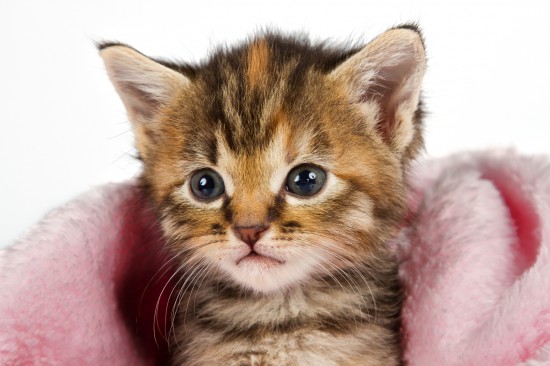

Feline influenza or cat flu is one of the most common respiratory illnesses in the cat, and one that elderly cats, young kittens and cats with a compromised immune system are particularly susceptible to. While flu in people, though unpleasant and debilitating, is usually not overly serious or life threatening in the healthy adult, in cats, feline influenza is a serious illness that can eventually prove fatal. Fortunately, feline vaccinations include coverage against the most common strains of feline influenza as standard, although the vaccine is not 100% effective and the cat owner should not rule out the possibility of their cat contracting cat flu just because they are vaccinated.
It is important for all cat owners to gain a basic understanding of feline influenza, how it affects cats and how it is transmitted, in order to protect their own cats and identify the onset of cat flu quickly if it should occur.
Feline influenza is similar to a nasty bout of the flu in people, and has similar symptoms and effects. Cat flu can make your cat quite ill, and while healthy adult cats will usually fight off the infection with time and veterinary care, young kittens, elderly cats and cats whose immune system has been weakened by another illness or condition may be hit particularly hard by the infection, which can prove fatal. Feline influenza is usually viral in nature, but may be bacterial, depending on the strain contracted by any particular cat.
Feline influenza is most commonly a viral condition, and over 80% of cases of feline influenza are caused by one of two specific known viruses: feline calicivirus or feline herpesvirus. These are the two viral strains that are vaccinated against as standard as part of your cat’s annual boosters, however there are various other less common viruses and bacteria that make up the other 20% of all feline influenza infections, which are not vaccinated against. While a vaccinated cat ergo stands an 80% lower chance than an unvaccinated cat of contracting one of the two main viral strains responsible for cat flu, there is still a risk of them developing one of the less common varieties, and so no cat should be thought to be immune.
Feline influenza is highly contagious, and easily passed from cat to cat. Direct contact with an infected cat can lead to infection, but as coughing and sneezing releases the virus or bacteria responsible for cat flu from the body, sometimes direct physical contact is not required.
The virus can be carried on bedding, bowls, and even people, so you may not ever be able to identify exactly how any given cat contracted cat flu, unless you know of another cat that was sick with it. The viral strains of feline influenza can even be passed on by carriers, cats that have the virus present in their bodies but that are not showing any signs of illness themselves.
Feline influenza is fairly straightforward to identify, and is rarely confused with other similar conditions. Cats affected with feline influenza will display some or all of the following symptoms:
The strain of flu any given cat has contracted can affect how severe the illness and symptoms are. Of the two main viral strains of feline influenza, feline herpesvirus is the more severe, and can be life threatening. It may also lead to ulcers around the eyes and a thick, mucky discharge from the eyes and nose, and the eyes becoming swollen shut.
Feline calicivirus usually causes milder and less pronounced symptoms, but left unchecked can lead to lameness, ulcers within the mouth and a very high temperature. “Milder” is a relative term, and both strains of feline influenza should be treated as very serious, and receive immediate treatment.
A large part of the treatment required for cat flu is intensive nursing rather than the administration of a definitive cure. Currently, no antiviral agents are commonly used to treat cat flu per se, but antiviral medications may be used to help fight infection. The main part of treatment involves keeping the cat comfortable and supporting their physical needs in order to give their bodies the best chances of fighting off the infection and recovering.
Treatment may involve:
Generally, otherwise healthy adult cats that receive prompt treatment for feline influenza will recover, although often with a hefty vet’s bill at the end of it! If your cat is insured, this should be covered by your insurance, but only if your cat was vaccinated against feline influenza and their vaccinations were kept up to date.
It can take several weeks to make a full recovery from feline influenza, and cats that contracted the feline herpesvirus strain of the flu will remain carriers of it for their entire lives, and may periodically shed the virus, which can infect other cats. Feline calicivirus infections generally leave the system entirely, although this can take several weeks and in some cases, years to achieve.
Copyright © 2005-2016 Pet Information All Rights Reserved
Contact us: www162date@outlook.com